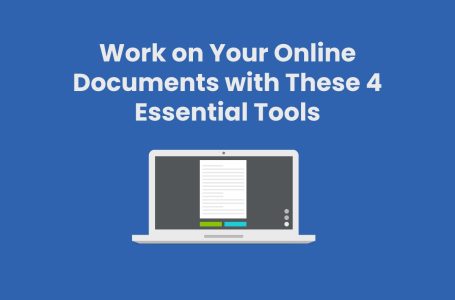HubSpot Integration
The HubSpot App Ecosystem has surpassed more than a thousand integrations in just two years after its marketplace recorded its first 500 apps mark. HubSpot has proven its way to work together with different applications so that users can have their maximum potential in terms of usability and functionality. This is a clear indication that HubSpot is dedicated to investing in its platform growth (HubSpot Company News)
Between 2020 to 2024, the cloud computing industry is predicted to grow by 24% annually, generating a wider choice of software for growing companies. HubSpot’s global partner ecosystem revenue is estimated to reach $12.5 billion in revenue by 2024, an opportunity for any SaaS company to build on top of HubSpot. All these efforts in integrations point in one direction, to offer a customer-centric platform that supports every stage of the customer journey (HubSpot IDC whitepaper).
A growing platform such as HubSpot can get a bit overwhelming over time, and it’s common among users to get things wrong about HubSpot integration. But is it true that HubSpot integrations are challenging to use with other applications? How complex does it get? And what does everyone think about it?
Table of Contents
What is HubSpot Integration?
Software and websites were in silos during the early web and software development stage. Do you remember signing in with different sets of credentials and you often forget your log-ins and passwords? These days, many apps are integrated with Google Sign-in to ease that problem. Integrations work on how different system applications will have a single source of information.
HubSpot Integration is where two or more applications are combined into the HubSpot platform to share information providing more features and options while using the software (HubSpot).
Since no monolithic application can solve every problem a user has, integrations between applications exist to ease the friction between software. Let’s say you’re in a meeting and you want everyone to be on the same page. You can achieve this by giving identical copies of the presentation to everyone. The same goes with HubSpot integration, they share information as one source of truth.
To maximize the investment in your HubSpot integrations, you must first ask these four questions:
(1) Does it speed up the company processes?
(2) Does it significantly increase work efficiency?
(3) Does it ensure applications exchange their information effectively?
(4) Does it enable users to do basic system operations within the integrations?
If you answered yes to all four questions, then you are ready for HubSpot integration for your company. The following questions you need to answer are:
(1) What applications should you use for your integration?
(2) Which app is best suited for your company’s operations?
(3) Can the apps you are using now integrate with HubSpot?
What is HubSpot App Marketplace?
HubSpot App Marketplace is a collection of software applications, cloud-based systems, plug-ins, and more. It ranges from free to paid apps divided into five categories: marketing, sales, customer service, productivity, and finance. It serves as a library for users to browse and search for apps and their functions to integrate with HubSpot.
If you are not sure what apps you want to integrate, here is a summary of the popular HubSpot integrations businesses use to maximize their productivity, efficiency, accuracy, and system operations.
16 Popular HubSpot Integrations for Businesses
- Ads integration – Helps you with the success of your ads and generates leads from them. This integration allows marketers to nurture their leads and see who interacts with the deployed ads.
- ABM integration – For account-based marketing to better customize messaging, CTAs, and marketing strategies. It helps attract more customers while focusing on current customer relationships.
- Analytics and Data integration – This allows you to compare, contrast, and summarize data all in one point to better understand different data analytics between your systems. It helps your team evaluate which efforts are working and which are not.
- Calling integrations – Call your customers directly inside HubSpot Dialer and sync it with your contact database. You can access customer contact information to have a better background review and assistance for your customers.
HubSpot Dialer is a dedicated integration for cloud-based telephony systems. You can do basic phone operations inside HubSpot CRM like instant outbound calls, sending SMS/MMS, dropping voicemails, and saving additional contact information.
- SMS integration – Connects your contact to the SMS broadcasting platform and reaches them fast through text messaging. Delight customers with SMS/MMS content and nurture them with SMS drip campaigns.
- Connector integration – It integrates HubSpot with other integration libraries like Zapier and connects to over 1000 applications with zero coding requirements.
- Content integration – Dedicated to helping you create and improve website content by looking at how audiences interact with it and using the insight for better engagement.
- Customer success integration – Boost CSR and sales enablement by streamlining communication between teams and directly to customers. Internal and external communication are on one page with this integration.
- eCommerce integration – Capture customer behavior inside your online store. See the product items with high checkout and abandonment rates and pages with the most increased traffic and shares for retargeting and re-engagement. One of the leading online stores in the US, Engineer Warehouse has been utilizing this approach which has shown a great increase in their revenue in 2020.
- Email integration – Track your prospect’s email interaction, set and measure email automation, and access hundreds of email templates available to use. Create and test email workflows for your email campaigns.
- Event and webinar integration – Host an in-person event, webinar, online training, or meeting and easily send invites to your attendees from your HubSpot contacts. Book, update, and post an event all within your HubSpot CRM.
- Lead generation integration – Manage your lead from contact capture to closing a deal. Sync your lead’s information at all points of their buying journey and learn what piques their interest in purchasing.
- Live chat integration – Initiate messaging in your website with live chat messages. Answer concerns and inquiries right away and set appointments on the spot. You can review these chat threads inside the HubSpot platform.
- Sales integration – Bring together your sales tools and tactics under one roof with HubSpot sales integration. It helps you keep your central details with marketing and customer support in one place.
- Social media integration – Understand what is happening in your social media circle and determine what content they interact with and share. You can also automate specific parts of social media functionalities.
- Video marketing integration – Helps you measure the analytics of adding video media to your website, sales pitch, and marketing content.
The Five Things Everyone Gets Wrong About HubSpot Integration
These are the five things everyone should know and often get wrong about HubSpot Integration.
#1. It requires an integration specialist
You cannot wrap your head around how software communicates since different software codes have specific programming languages. With this, you thought of hiring an integration specialist to help you bridge your systems. But that’s not always the case. You see, API lets software developers connect their native app directly to HubSpot with HubSpot Connect.
API is a set of codes that acts as an interface between computer software. HubSpot Connect lets users install third-party applications, as simple as installing Google Chrome plug-ins into your browser. HubSpot APIs can also be set up at object-level integration, meaning that you can set data parameters. In simple terms, you can decide what type of data is compatible with the integration.
2. It’s too complex to use
With so many integrations available for HubSpot, you might be wondering if the HubSpot CRM dashboard will look like an airplane cockpit with many buttons and levers to push. That is not the case with HubSpot Integration. It was made sure that no matter how many integrations you add into the bucket, usability and user experience is not compromised.
UX research is critical for HubSpot data integration as it clarifies features, user variation, how end-users perform specific tasks, and how data interacts from system to system. HubSpot ensures that UX research collaborates with them before approving new app integrations in their app marketplace. You can rest assured that it will not be too complex to use HubSpot Integration.
3. It can cause vendor-lock in
Vendor lock-in is when the cost of switching to other providers costs more than staying with the current vendor. It also means you cannot bring your existing integration with the new vendor. It is never the case with HubSpot Integration because the goal of opening their platform to developers is to provide a variety of options for their users to choose from and integrate with their HubSpot CRM.
It also leaves an opportunity for companies to consult with other software vendors and see what they can work out. You can rest easy knowing that your sales dialer would only complement HubSpot automation. Software with the same functionality would only have to compete themselves at any integration levels, and some even merge to provide better functionality for their users.
4. Integrating everything all at once
If you are relatively new to HubSpot Integration, you might attempt to install as much integration as you can think of to help your business. While this is great for many companies, poor software integration planning often leads to integration failure. Before integrating an application to HubSpot, make sure you know what type of data to use and how that data is going to behave across different platforms.
Test integration with dummy data before deploying them with the real ones. Implement about a week of testing from your users and see if it’s working out well. The main problem you want to prevent this time is pooling your HubSpot platform with unnecessary integration. Integration is only as good as any other software depending on how users make use of it.
5. It has a high cost of maintenance
HubSpot integration connects through APIs, and Integration Platform does not manage it as a service or iPaaS agency. An average of $1200 annually is needed to maintain data integration with iPaaS, but HubSpot Integration comes with their enterprise plans, and some integrations are free. It will ultimately be a cost-saver for you since you don’t need to scale up the cost for every integration.
Some integration with HubSpot depends on the pricing limitations. Before installing an integration, check the native application first to see whether you need to scale your pricing with them or not. They will save you the hassle of troubleshooting because of technical integration issues caused by plan and pricing restrictions.
What to Do Before Setting Up Your Hubspot Integration?
Determine if you need an API or iPaaS. HubSpot Integration is relatively easy to follow. You have to browse their HubSpot App Marketplace with all the available tools ready for integration. HubSpot Integration comes with pre-built APIs for your reference, while some require a middleware or an iPaaS agency’s help. Plan your integration with your software development team, and if you don’t have one, you can always reach out to a HubSpot agent to help you configure your integration.
Dedicate a team to implement integration processes. HubSpot Integration takes more than just installing it on the platform. You have to allocate time and labor to implement the integration to view what is and isn’t working well.You will also have time for any troubleshooting needed before implementing it with your team.
Consult with other third parties other than HubSpot. While HubSpot alone is an excellent platform for sales and marketing, it won’t hurt to consult with other similar platforms like Zoho and Salesforce. HubSpot even encourages its users to consult third-party agencies because some vendors can use a more tailored approach towards system integration.
Practice cross-platform execution. HubSpot integration does not mean you can do everything on the platform. Yes, one perk of integration indeed comes with the essential operation of other systems in the platform, such as sending a text message on HubSpot messaging, booking a Zoom meeting with a client, and dialing a phone number with a HubSpot dialer. You still have to make balanced use of other platforms connected to HubSpot and try switching tabs from time to time.
Plan the needed cost and expense before the integration. You might get excited that your favorite booking app is integration-ready with HubSpot, but you have to hold down a little bit because some integrations come with a small price to pay. Set a budget for integration if needed and identify possible ROI metrics. It’s all about the worth of the investment to the integration that matters.
Final thoughts
Are you using HubSpot integration already? Integrating software today is not easy but not too complicated to start with. It helps businesses in so many ways like simplifying processes, optimizing efforts, and empowering your teams. HubSpot is an excellent way for companies to scale up their process and enable the organization to be productive.





